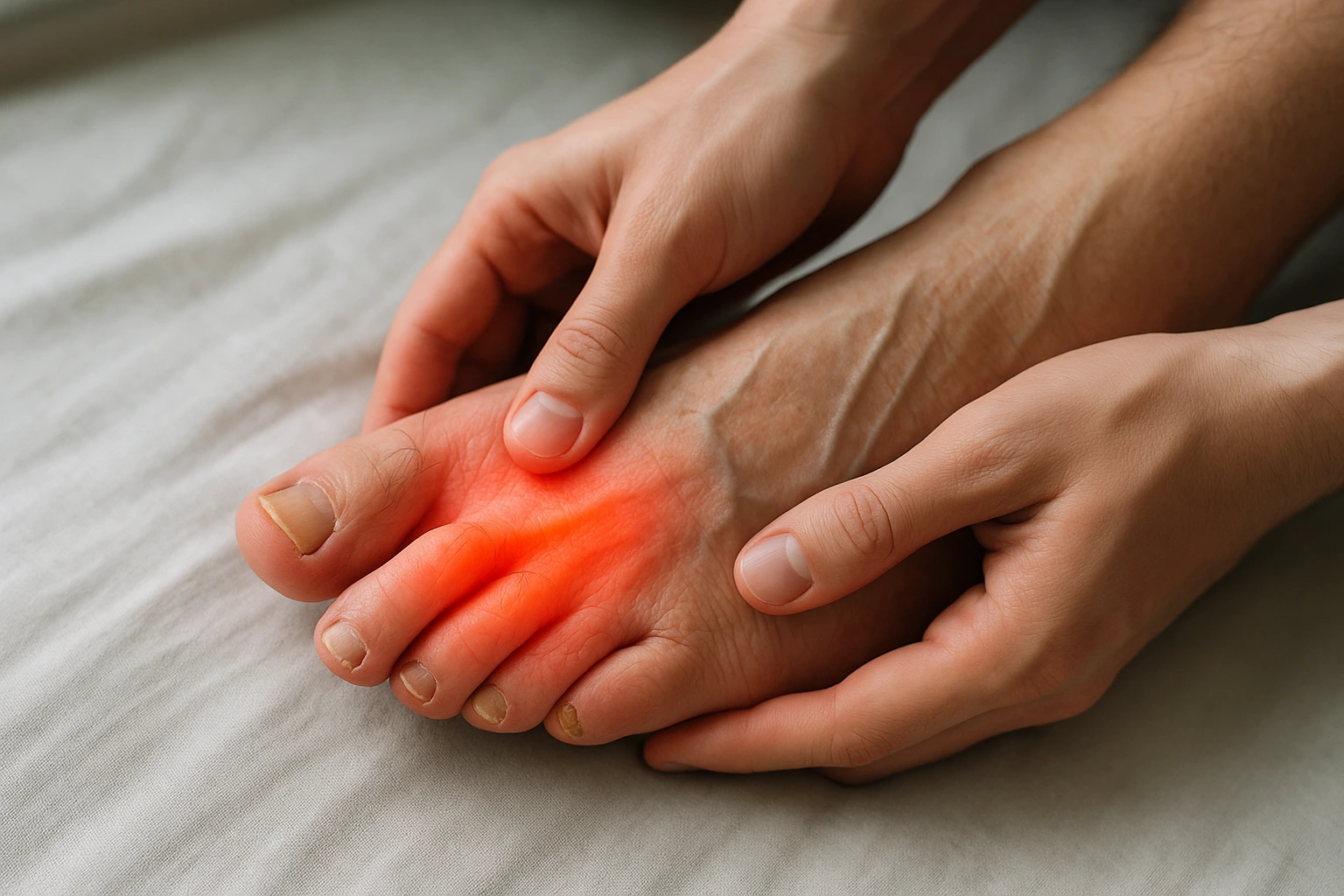If you’ve ever felt a burning sensation, numbness, or tingling in your feet, you might think, “It’s just poor circulation” or “I must have slept wrong.” But these symptoms could indicate foot neuropathy — a nerve disorder affecting millions worldwide. Left untreated, it can cause severe pain, balance issues, and even permanent mobility loss.
This guide will help you understand why foot neuropathy matters, how to identify it early, and the best treatment options available today.
Why Foot Neuropathy Matters
Foot neuropathy is a form of peripheral neuropathy where nerve damage disrupts communication between the feet and the brain. Common causes include:
- Diabetes (leading cause)
- Vitamin deficiencies
- Injuries
- Infections
- Chronic alcohol use
Fact: The American Diabetes Association estimates that over 50% of people with diabetes develop some form of neuropathy, usually starting in the feet. Early diagnosis can prevent complications such as foot ulcers and infections.
Key Insights About Foot Neuropathy
- Not a Single Symptom: Can involve tingling, sharp pains, burning, numbness, or extreme sensitivity.
- Progressive Condition: Symptoms worsen if ignored, making walking difficult.
- Multiple Causes: Apart from diabetes, autoimmune disorders, chemotherapy, and certain medications can trigger it.
- Manageable but Rarely Fully Curable: Treatment focuses on controlling the cause and relieving symptoms.
Step-by-Step Guide to Managing Foot Neuropathy
1. Get a Proper Diagnosis
See a neurologist or podiatrist for tests such as nerve conduction studies, blood work, and imaging.
2. Control Underlying Conditions
- For diabetes, keep blood sugar between 80–130 mg/dL before meals.
- For vitamin deficiency, take B-complex supplements after consulting a doctor.
3. Pain Management Options
- Medications: Gabapentin, pregabalin, duloxetine (prescription only).
- Topical Treatments: Capsaicin cream, lidocaine patches.
4. Lifestyle Changes
- Wear wide, supportive shoes (New Balance, Orthofeet).
- Avoid walking barefoot to prevent unnoticed injuries.
5. Physical Therapy
- Balance training & foot-strengthening exercises improve mobility and reduce fall risk.
Real-Life Example: Mark’s Recovery
Case: Mark, 52, diabetic, ignored “pins and needles” in his toes. Six months later, his pain worsened, making walking difficult. After consulting a neurologist, he started blood sugar control, gabapentin, and physical therapy.
Result: In 3 months, pain reduced by 40%, and mobility returned.
Lesson: Early action matters.
Home Care Tips for Managing Foot Neuropathy
- Inspect feet daily for cuts or swelling.
- Warm water soaks to boost circulation (avoid hot water).
- Compression socks (Sockwell, Copper Fit) to reduce swelling.
- Regular exercise — walking, swimming, cycling.
Common Mistakes to Avoid
- Ignoring early symptoms.
- Wearing tight shoes that restrict circulation.
- Using over-the-counter products without medical advice.
Future of Neuropathy Treatment
- Regenerative medicine (stem cell research).
- Neurostimulation devices that help nerve healing.
- AI-powered smart insoles to track pressure points and prevent injury.
Final Word: Don’t Wait, Act Early
Foot neuropathy isn’t just foot pain — it’s your body signaling a deeper issue. With the right diagnosis, targeted treatment, and consistent lifestyle changes, you can slow its progression and maintain mobility.
If you’ve been feeling numbness or pain in your feet, schedule a specialist appointment today. Your future mobility depends on it.




